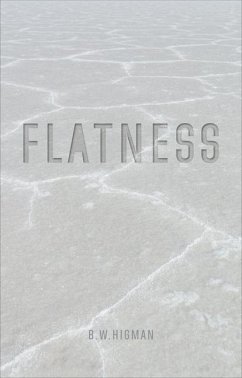There are few truths about the modern world that are more self-evident than this: it is flat. We write on flat paper laid atop flat desks. We look at flat images on flat screens mounted on flat walls, or we press flat icons on flat phones while we navigate flat streets. Everywhere we go it seems the structures around us at one time or another had a level placed upon them to ensure they were perfectly flat. Yet such engineered planar surfaces have become so pervasive and fundamental to our lives that we barely notice their existence. In this highly original study, B. W. Higman employs a wide variety of approaches to better understand flatness, that level platform upon which the dramas of modern life have played out. Higman looks at the ways that humans have perceived the natural world around them, moving from Flat Earth theories to abstract geometric concepts to the flatness problem of modern cosmology. Along the way he shows that we have simultaneously sought flatness in our everyday lives and also disparaged it as a featureless, empty, and monotonous quality. He discusses the ways flatness figures as a metaphor for those things or people who are boring, dull, or lacking energy or inspiration, and he shows how the construction of flat surfaces has contributed to a degradation of visual diversity. At the same time, he also shows how we have pursued flatness as an engineering ideal and how we have used it conceptually in art, music, and literature. Written with wit and wisdom, and splendidly illustrated throughout, this book will appeal to all those who are interested in the topography of the modern world, to anyone who has ever marveled at the feel of its smooth surfaces or felt oppressed by the tyranny of its featurelessness.
Hinweis: Dieser Artikel kann nur an eine deutsche Lieferadresse ausgeliefert werden.
Hinweis: Dieser Artikel kann nur an eine deutsche Lieferadresse ausgeliefert werden.








